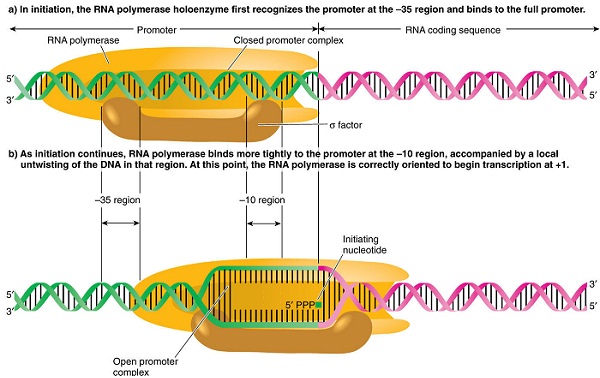Translation in Prokaryotes:
Term Translation or protein synthesis, is quite same in eukaryotes and prokaryotes. We will look at the details of the procedure in prokaryotes and consider the differences in eukaryotes afterwards.

The procedure of translation can be separated into three primary steps: elongation, initiation, and termination. Every of these steps will be measured in turn. Initiation of translation in prokaryotes includes the assembly of the parts of the translation system that are: the two ribosomal subunits (30S subunits &50S), the mRNA to be translated, the first formyl aminoacyl transfer RNA the transfer RNA charged with the first amino acid and GTP as a source of energy and three initiation factors are IF1, IF2, and IF3 that help the assembly of the initiation complex.
Overview
Ribosomes exist generally as divided subunits which come together to form a ribosome when they bind to an mRNA near its 5' end. Ribosome reads the nucleotide sequence from the 5' to 3' direction synthesizing the corresponding protein from amino acids in an N-terminal (amino-terminal) to C-terminal (carboxyl terminal) way. The amino acids used are covalently bound to tRNA (transfer RNA) molecules to form aminoacyl-tRNAs. Each aminoacyl- transfer RNA bears a triplet of bases, known as an anticodon. The ribosome reads each triplet codon of the mRNA in turn and an aminoacyl-tRNA molecule with an anticodon that is complementary to the codon binds to it through hydrogen bonding. The peptide bond is then formed among the incoming amino acid and the growing end of the polypeptide chain.
Whole, protein synthesis (or translation) takes place in three stages that are; termination, initiation, and elongation. In During initiation, the mRNA-ribosome complex is created and the first codon always AUG binds the first aminoacyl- tRNA (called initiator tRNA). In During the elongation phase, the other codons are read in sequence and the polypeptide grows through addition of amino acids to its C- terminal end. This procedure continues until a termination codon (Stop codon), that does not have a corresponding aminoacyl-tRNA with that to base pair, is reached. At this point the protein synthesis ceases (termination phase) and the finished polypeptide is released from the ribosome. Generally at any one time, several ribosomes are translating an mRNA concurrently, forming a structure known a polyribosome or polysome.